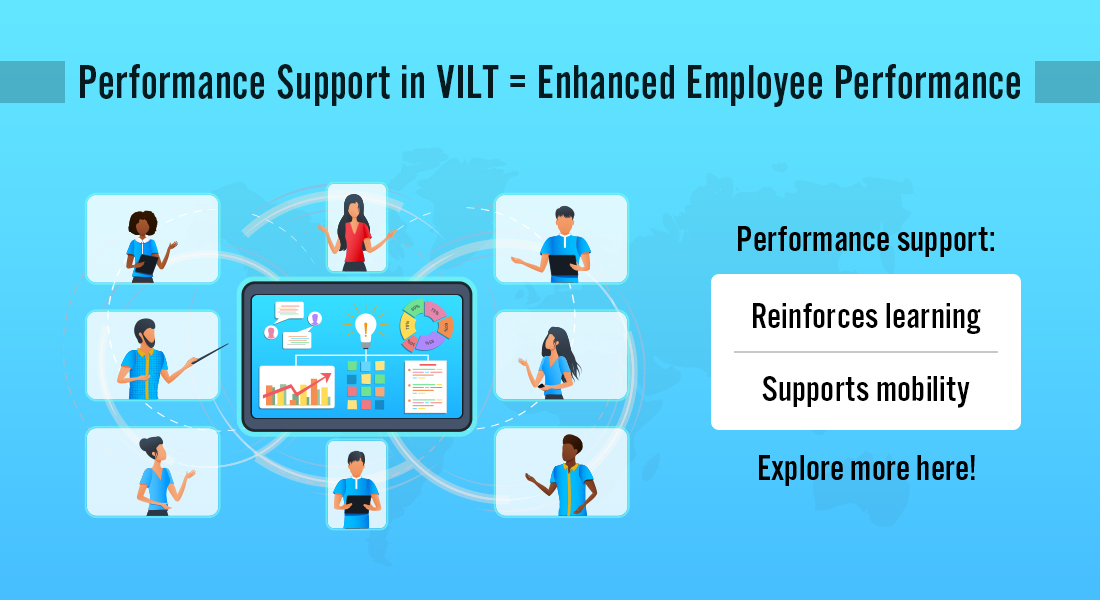A Guide to Leveraging Performance Support Microlearning Techniques

The workplace is a dynamic space, constantly shaped by new technologies, processes, and customer needs. Success in this environment depends on the ability of employees to keep their knowledge and skills sharp. Traditional training methods, often isolated from the immediate work context, don't always provide the timely support employees need to perform their best. This is where performance support microlearning emerges as a powerful solution.
Trying to Leverage Performance Support Microlearning Techniques?
Here are a few use cases -
- New employee onboarding
- Software training
- Sales training
- Compliance training
- Customer service
The Importance of Continuous Learning and Development
In today's workplace, learning doesn't stop after onboarding or occasional workshops. Continuous learning and development have become the norm. This empowers employees to:
- Adapt to Change: The rapid pace of change means being able to adjust quickly to new processes and systems.
- Problem-Solve Effectively: On-demand knowledge helps tackle new problems and overcome roadblocks.
- Boost Productivity: Skill enhancement directly benefits the bottom line through efficiency and effectiveness.
- Increase Employee Satisfaction: Employees feeling supported and empowered are more likely to be satisfied and engaged in their work.
→ Download Infographic Now: Microlearning to Skyrocket Your Corporate Training Initiatives
Performance Support Microlearning: The Key to Continual Learning
Performance support microlearning delivers bite-sized, targeted training modules focused on specific skills or knowledge. These microlearning units provide in-the-moment support, allowing employees to access information and learn precisely when they need it most.
Benefits of Performance Support Microlearning
Just-in-Time Learning: Information available at the precise moment it's needed.
Increased Retention: Focused content boosts memory and retention compared to lengthy training sessions.
Reduced Cognitive Load: Small chunks of information are easier to process and apply.
Cost-Effective and Scalable: Development is streamlined, and microlearning fits into busy schedules.
Accessibility: Often mobile-friendly, for learning anywhere, anytime.
Examples of Performance Support Microlearning Formats
Microlearning can take various forms, some of the most effective for performance support include:
How-To Videos: Short, step-by-step visual guides demonstrating processes or tasks.
Infographics: Visually appealing presentations of key concepts, making data easy to understand.
Interactive Simulations: Hands-on practice in a safe, simulated environment
Job Aids: Checklists, flowcharts, or decision trees to guide tasks and decision-making.
Short Quizzes: Knowledge checks that provide immediate feedback and reinforcement.
Designing Effective Performance Support Microlearning
Creating microlearning isn't just about breaking down content into smaller pieces. Here's what makes these programs truly effective:
Focus: Each module targets a single learning objective, avoiding information overload.
Relevance: Directly connected to real job tasks and aligned with performance goals.
Engaging Content: Uses multimedia, visuals, and interactive elements to maintain learner interest.
Responsive Design: Optimized for viewing on smartphones, tablets, and desktops.
Ease of Access: Content should be easily discoverable within an organization's knowledge base.
Performance Support Microlearning: Workplace Training Use Cases
Let's look at some practical examples of how this type of microlearning can be applied:
1. New Employee Onboarding
There are a lot of challenges associated with traditional new employee onboarding, here are a few of them.

Here’s how microlearning can help -
- Bite-sized modules on company policies, systems, and essential tasks.
- Short videos introducing key personnel and team structures.
2. Software Training
- Task-specific tutorials on using software programs.
- Simulations allowing exploration of the software's interface and functions.
3. Sales Training
- Infographics on product features and benefits, also helping with product training.
- Short scenarios for practicing objection handling and closing techniques.
4. Compliance Training
- Short quizzes on regulations or safety procedures.
- Infographics to summarize complex policies and compliance updates.
5. Customer Service
- Job aids with troubleshooting steps and communication scripts.
- Videos demonstrating effective conflict resolution techniques.
Tips For Success
To get the most out of your performance support microlearning:
Analyze Performance Gaps: Identify where employees need the most support.
Get Employee Feedback: Involve them in designing what would be most helpful.
Integrate with Workflow: Make accessing microlearning seamless within daily work.
Measure and Iterate: Track usage and impact, then make adjustments as needed.
Beyond Content: Creating a Performance Support Ecosystem
While the content itself is crucial, performance support is more than just stand-alone learning units. Creating an effective system involves technology and strategy:
- Curated Content: Organize and manage microlearning assets in a central, easily searchable repository or accessible knowledge base.
- Learning Management System (LMS): Depending on your organization's size and needs, an LMS helps deliver, track, and analyze the use of microlearning. Some LMS platforms have specialized features for performance support. Here are a few popular LMS platforms.

- Artificial Intelligence (AI): Can be used to personalize learning paths, suggest resources, or even create microlearning content based on frequently asked questions.
- Social Learning Integration: Allow employees to share knowledge, ask questions, and support each other through discussion forums or collaboration tools.
The Future of Performance Support and Microlearning
As technology evolves, so too will the possibilities of performance support microlearning:
- Augmented Reality (AR) and Virtual Reality (VR): Immersive simulations for hands-on practice of complex procedures, especially in technical and manufacturing fields.
- Wearable Technology: Smart wearables provide real-time microlearning notifications directly to employees. Some popular ones are smartwatches or AR glasses.
- Data Analytics: Advanced analytics will reveal patterns, optimize content delivery, and further personalize learning, making performance support even more efficient and targeted.
Parting Thoughts!
Performance support microlearning offers a powerful solution for empowering employees to learn at the point of need. When well-designed and thoughtfully integrated, it boosts productivity, drives performance, and fosters a culture of continuous improvement. By investing in performance support microlearning, organizations not only enhance current workforce capabilities but also create a resilient and adaptable workforce ready for the challenges of tomorrow. Here’s a bonus infographic about microlearning to help you understand more about it.


![Microlearning — How to Leverage it for Macro Results [Infographic]](https://no-cache.hubspot.com/cta/default/59327/16407642-6662-4ba8-882c-72f2b0b9f493.png)


